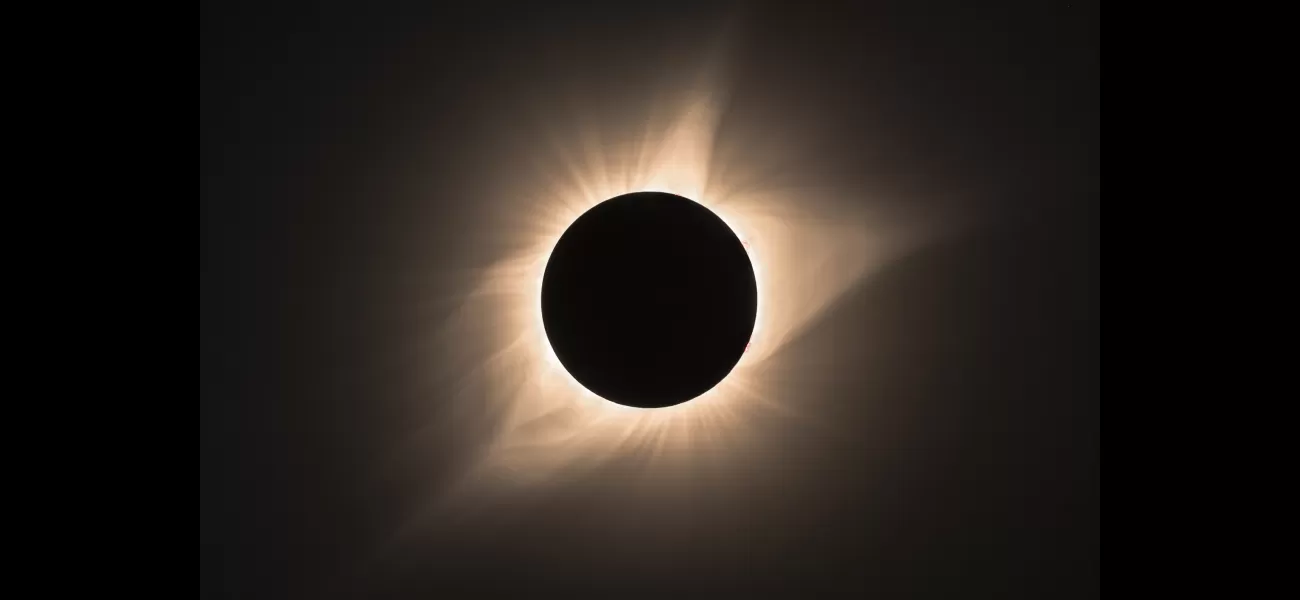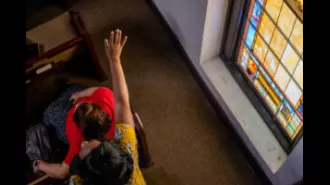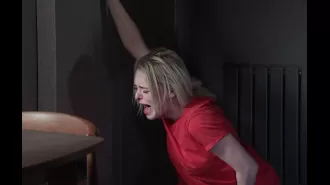A complete solar eclipse is approaching - find out when and where to view it.
Such a show.
March 26th 2024.

Nature has a way of surprising us with its spectacular events, and a total eclipse is certainly one of them. Last year, we were treated to an unforgettable display of comets, meteor showers, Northern Lights, and an annular eclipse. And this year, we're in for an even bigger treat with a full, total eclipse - the most coveted kind.
Unfortunately for those in the UK, the eclipse won't be passing through, but there's still time to plan a quick trip to Mexico or the US to witness the grand event on April 8. Plus, you'll have a better chance of clear skies in these locations compared to the ever-changing weather in Britain.
The shadow of the eclipse will make its journey from west to east, starting in northern Mexico, passing diagonally across the US, and ending at the eastern tip of Canada. Some of the best cities to witness this phenomenon include Indianapolis in Indiana, Cleveland in Ohio, and Niagara Falls in New York - a perfect combination of nature's wonders.
For those looking for a more tropical experience, a partial solar eclipse will be visible in the Caribbean and South Pacific, adding the Bahamas and Tahiti to the list of possible destinations.
But if you prefer to stay closer to home, you're in luck! The edge of the partial eclipse will also graze Iceland and even reach as far east as Ireland.
Now, you may be wondering what exactly causes a solar eclipse. Well, it happens when the Moon passes directly between the Earth and the Sun, blocking out our star and casting a part of the planet into temporary darkness. Surprisingly, there are between two to five solar eclipses every year, but not all of them are visible to us, and total eclipses occur only once every 18 months.
There are different types of solar eclipses, such as the total, annular, and partial. A total eclipse occurs when the Moon completely covers the Sun, and the Sun's corona becomes visible around the Moon's shadow, creating a darkened sky similar to dawn or dusk. An annular eclipse, on the other hand, happens when the Moon is at its farthest point from Earth and doesn't fully cover the Sun, leaving a ring of light around it, known as the "ring of fire." And a partial eclipse occurs when the Moon is not perfectly aligned with the Sun, resulting in a crescent-shaped blockage.
Now, how can you safely watch a solar eclipse? The most important rule is to never look directly at the Sun. Before the total eclipse, you can use special glasses that are much darker than regular sunglasses. However, be cautious when purchasing them, as there are counterfeit glasses on the market. To test your glasses, try wearing them indoors - you should only be able to see very bright lights, and even those should appear faint. If you can see objects clearly, then the glasses are not strong enough to protect your eyes.
Another option is to use binoculars specifically designed for viewing the Sun throughout the year. These will allow you to observe the Moon moving in front of the Sun during the eclipse. Or, you can easily make a pinhole projector by creating a small hole in a piece of card and holding it up to the Sun, projecting the image onto another piece of card.
For those eagerly waiting for the next eclipse in the UK, unfortunately, it won't be happening anytime soon. Total solar eclipses only return to the same spot every 400 years, and the next one won't be until 2090. However, there will be a partial eclipse on March 29, 2025, and another on August 12, 2026.
So, whether you're planning a trip to witness the eclipse or staying home to watch it from your backyard, remember to always protect your eyes and enjoy this magnificent display of nature's wonders.
Unfortunately for those in the UK, the eclipse won't be passing through, but there's still time to plan a quick trip to Mexico or the US to witness the grand event on April 8. Plus, you'll have a better chance of clear skies in these locations compared to the ever-changing weather in Britain.
The shadow of the eclipse will make its journey from west to east, starting in northern Mexico, passing diagonally across the US, and ending at the eastern tip of Canada. Some of the best cities to witness this phenomenon include Indianapolis in Indiana, Cleveland in Ohio, and Niagara Falls in New York - a perfect combination of nature's wonders.
For those looking for a more tropical experience, a partial solar eclipse will be visible in the Caribbean and South Pacific, adding the Bahamas and Tahiti to the list of possible destinations.
But if you prefer to stay closer to home, you're in luck! The edge of the partial eclipse will also graze Iceland and even reach as far east as Ireland.
Now, you may be wondering what exactly causes a solar eclipse. Well, it happens when the Moon passes directly between the Earth and the Sun, blocking out our star and casting a part of the planet into temporary darkness. Surprisingly, there are between two to five solar eclipses every year, but not all of them are visible to us, and total eclipses occur only once every 18 months.
There are different types of solar eclipses, such as the total, annular, and partial. A total eclipse occurs when the Moon completely covers the Sun, and the Sun's corona becomes visible around the Moon's shadow, creating a darkened sky similar to dawn or dusk. An annular eclipse, on the other hand, happens when the Moon is at its farthest point from Earth and doesn't fully cover the Sun, leaving a ring of light around it, known as the "ring of fire." And a partial eclipse occurs when the Moon is not perfectly aligned with the Sun, resulting in a crescent-shaped blockage.
Now, how can you safely watch a solar eclipse? The most important rule is to never look directly at the Sun. Before the total eclipse, you can use special glasses that are much darker than regular sunglasses. However, be cautious when purchasing them, as there are counterfeit glasses on the market. To test your glasses, try wearing them indoors - you should only be able to see very bright lights, and even those should appear faint. If you can see objects clearly, then the glasses are not strong enough to protect your eyes.
Another option is to use binoculars specifically designed for viewing the Sun throughout the year. These will allow you to observe the Moon moving in front of the Sun during the eclipse. Or, you can easily make a pinhole projector by creating a small hole in a piece of card and holding it up to the Sun, projecting the image onto another piece of card.
For those eagerly waiting for the next eclipse in the UK, unfortunately, it won't be happening anytime soon. Total solar eclipses only return to the same spot every 400 years, and the next one won't be until 2090. However, there will be a partial eclipse on March 29, 2025, and another on August 12, 2026.
So, whether you're planning a trip to witness the eclipse or staying home to watch it from your backyard, remember to always protect your eyes and enjoy this magnificent display of nature's wonders.
[This article has been trending online recently and has been generated with AI. Your feed is customized.]
[Generative AI is experimental.]
0
0
Submit Comment





